Pushing the Olympus E-P3 to Do What It Was Not Designed for — Catching the Ball on the Bat at a Not So Well Lighted Baseball Game — Fun for the Childish (Like Me)
© 2013 Peter Free
07 April 2013
Fun with timing at the ballpark
I get easily bored sitting around watching other people do things. If I have a camera handy, I divert myself by catching moments of interest.
This is more fun when the camera I have is not well designed to do what I intend. Like a couple of nights ago, when I took the Olympus E-P3 to an evening baseball game. Its now obsolete sensor doesn’t work well in low light. And the kit lens is too short (and too slow) at the telephoto end to work at the distances involved.
I challenged myself to catch the ball hitting and coming off the bat. Both without using the camera’s continuous shutter mode.
Examples
The shutter speeds and f-stops were dictated by the limits of the kit lens and trying to keep the ISO low enough, so that I could get something useful out of the camera sensor.
Below — the “big” picture from a well-timed shutter click:
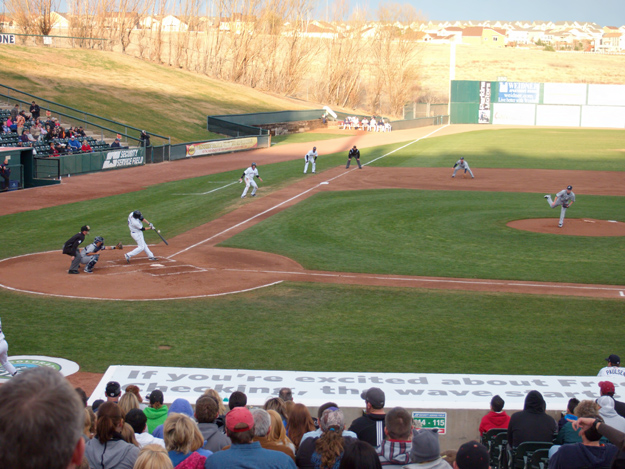
Below — a close-up of the ball and bat (cropped from the big picture) — ISO 800, 1/200th, f5.6:
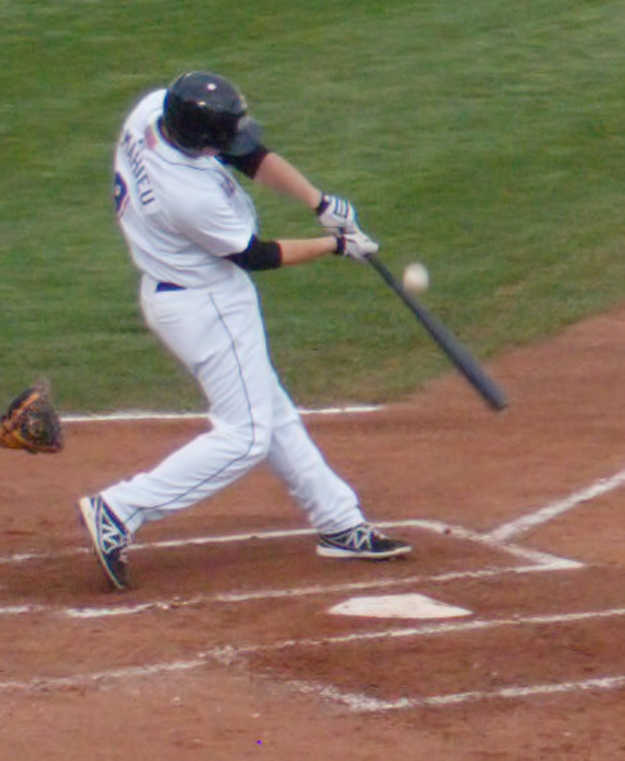
Below — a just hit ball:

Below — a close-up of the ball in its initial flight (cropped from the above photo) — ISO 1600, 1/200th, f4.3:
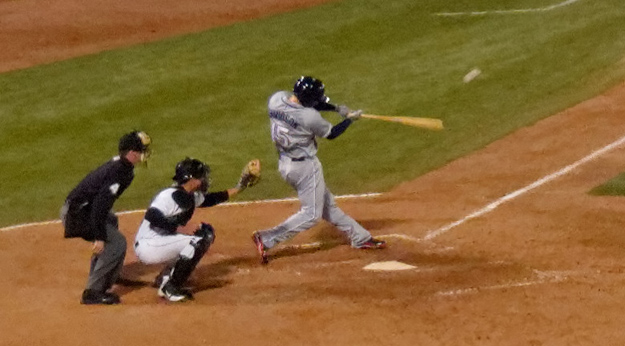
And more fun
I also tried to get a swing and miss and a foul ball into the batter’s box.
Below — crop from the swing and miss — ISO 1250, 1/320th, f4.4:
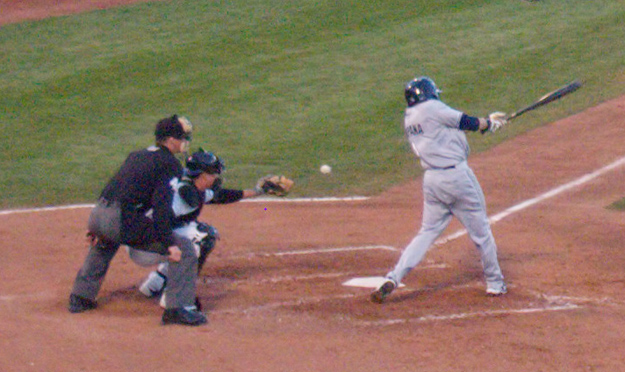
Below — crop from foul hit directly down — ISO 1250, 1/320th, f4.4:

Below — what turned out to be a perfect bunt, crop — ISO 1250, 1/200th, f4.2:
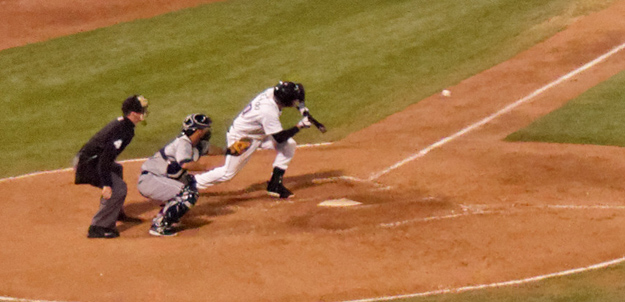
Caveats
If your shutter speed is too slow, the ball can become a disappearing streak (in the picture) because it was traveling faster that the sensor needed to pinpoint its place at any one time. The result is an odd-looking blur, composed primarily of the colors and textures that were behind the ball during its flight.
Below — an example of blur in which the ball is becoming difficult to see — ISO 1250, 1/160th, f4.4. The ball is a white blur just above the intersection of the third base line and the front left edge of the batter’s box — the batter is looking at it:

If the batter is between you and home plate, and your timing is on, you will not see the ball in the photograph because it is hidden in front of the hitter. I have quite a few of those.
It’s all about luck and timing
Below — the ball an instant before entering the catcher’s mitt — ISO 1600, 1/200th, f4.3:
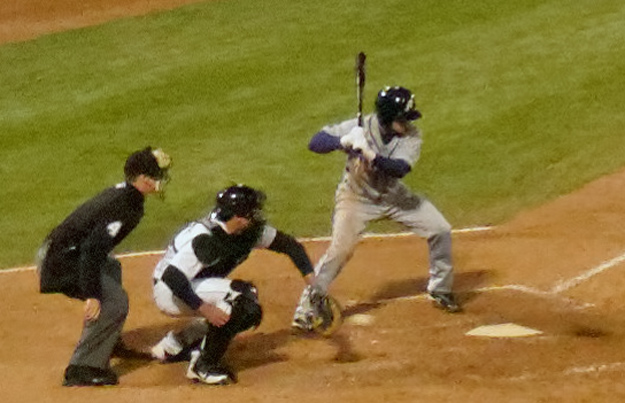
The moral? — If you can’t be up there hitting, you can still see if you’ve got some basic timing down
It makes the sit around time more interesting.
 PeteFree.com
PeteFree.com